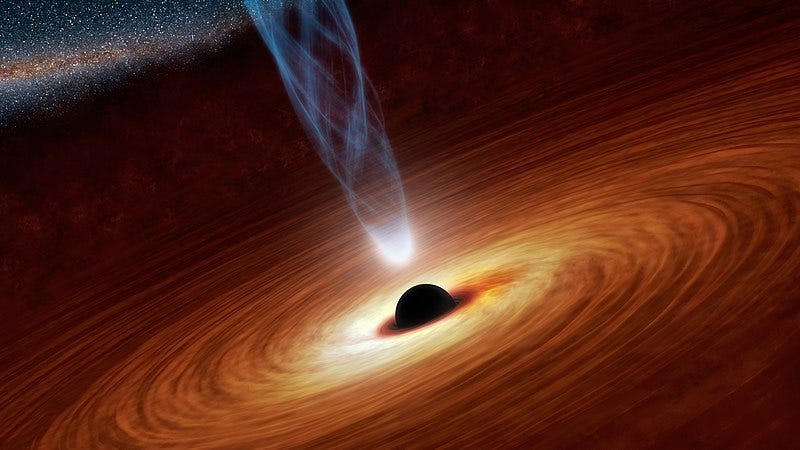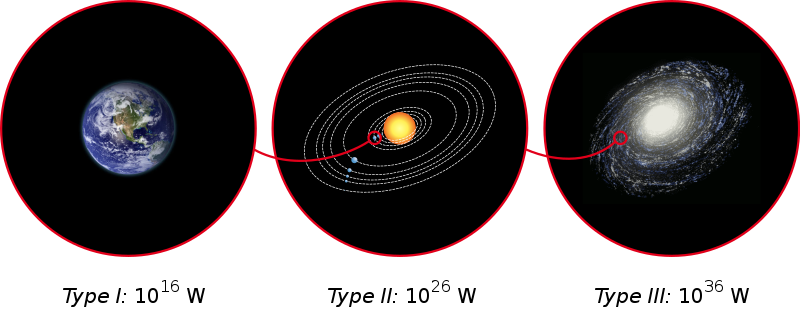Harnessing Black Holes: The Potential of Dyson Spheres
Written on
Chapter 1: Introduction to Dyson Structures
Recent studies indicate that constructing enormous energy-collecting structures around black holes might yield significant energy output.

Dyson Swarms and Spheres
The concept of Dyson spheres originates from philosopher and science fiction author Olaf Stapledon, who envisioned "a gauze of light traps" encircling stars in his notable work, Star Maker, published in 1937.
In 1960, the physicist Freeman Dyson further popularized this concept, suggesting that these energy-collecting structures could be constructed around stars, which we now refer to as Dyson spheres.
It's important to note that a complete solid sphere is not feasible; Dyson emphasized the impracticality of a fully enclosed shell. Instead, we should visualize a collection of smaller, energy-harvesting entities orbiting the star. Thus, the term "sphere" represents this swarm-like configuration.
Since its introduction, this concept has been explored extensively in science fiction and is now being considered by researchers searching for extraterrestrial technological civilizations. A Dyson sphere would indeed modify the stellar light, making it appear dimmer and altering its emission spectrum due to the materials used in its construction.
Chapter 2: Black Holes as Energy Sources
Recent research suggests we may have overlooked an intriguing energy source: black holes.

Traditionally, black holes are perceived as voracious entities that consume energy, leaving nothing to escape. However, their influence on surrounding stars can be quite energetic.
The researchers outline several mechanisms through which black holes can be harnessed for energy:
- Cosmic Background Radiation: Black holes are generally colder than the surrounding cosmic background radiation, which creates a temperature differential suitable for energy harvesting.
- Hawking Radiation: Stephen Hawking revealed that black holes are not entirely black. Virtual particle pairs near the event horizon can split, with one particle being absorbed while the other escapes, releasing energy as radiation.
- Accretion Disk: The substantial gravitational pull of black holes attracts surrounding material, which forms an accretion disk. The friction generated from this swirling matter produces considerable heat and energy.
- Bondi Accretion: This method involves the spherical accumulation of gas towards the black hole. The acceleration of gas molecules results in heating, which generates energy.
- Corona: Similar to stars, black holes possess plasmas that create a corona. The heat from this plasma can also be converted into energy.
- Relativistic Jets: Due to interactions in the accretion disk and possibly tangled magnetic fields, black holes emit high-velocity jets of ionized matter. The heat and speed of these jets create additional energy.
The researchers predict that the energy obtainable from a medium-sized black hole's accretion disk could equate to the output of 100,000 Dyson-sphered stars.

This energy potential is theorized to support a Type II civilization on the Kardashev scale, and with larger black holes or additional energy sources, it could even power a Type III civilization.
The conclusion drawn from this research highlights that black holes could serve as a more efficient energy source compared to traditional main sequence stars. However, this remains a theoretical exploration, as we have yet to visit a black hole, and creating a Dyson sphere remains a distant ambition for humanity.
This video discusses the intriguing concept of Dyson spheres around supermassive black holes, shedding light on potential energy harvesting methods.
This timelapse video illustrates the dynamic nature of a black hole Dyson sphere, showcasing energy interactions in an engaging format.